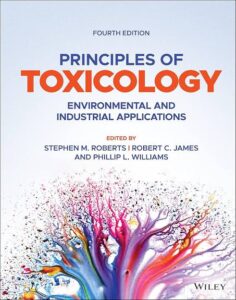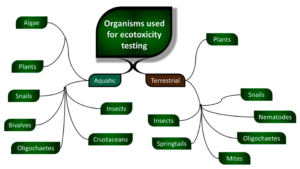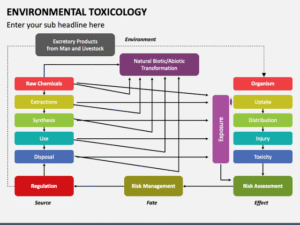Back to: Environmental Biology 400 Level
Welcome to class!
Have you ever wondered how substances like pesticides, industrial chemicals, or even natural toxins affect living things in the environment? Why do some fish die after a chemical spill, or why do farmers wear protective gear when spraying their crops? These are questions environmental toxicology helps us answer. Today, we’ll explore the foundational principles that guide our understanding of how toxic substances interact with the environment and living organisms—especially within the Nigerian context.
Principles Of Environmental Toxicology
What is Environmental Toxicology?
Environmental toxicology is the scientific study of the harmful effects of chemical, physical, and biological agents on living organisms in the environment. It combines biology, chemistry, ecology, and public health to examine how pollutants affect ecosystems and human well-being.

Key Concepts in Toxicology
Toxicants and Toxins
Toxicants are man-made harmful substances (like pesticides and industrial chemicals), while toxins are naturally occurring (such as those from plants or animals). For example, lead from petrol or batteries is a toxicant, whereas aflatoxins from mouldy grains are natural toxins.
Dose-Response Relationship
This principle explains that “the dose makes the poison.” A small quantity of a chemical may be harmless, but in larger amounts, it becomes dangerous. For instance, trace amounts of heavy metals in water might be safe, but higher doses can damage organs and cause death.
Routes of Exposure
Organisms can be exposed to toxins through:

Inhalation (e.g., breathing in polluted air in Onitsha)
Ingestion (e.g., eating contaminated fish from polluted rivers)
Skin contact (e.g., farmers exposed to herbicides without gloves)
Bioaccumulation and Biomagnification
Toxic substances can build up in the bodies of organisms (bioaccumulation) and increase in concentration up the food chain (biomagnification). In Nigeria, mercury used in illegal gold mining can accumulate in fish, which are then consumed by humans.
Acute vs Chronic Toxicity
Acute toxicity causes immediate effects (like vomiting or death), while chronic toxicity happens over time (e.g., cancer, reproductive harm). Exposure to low levels of oil pollution over years in the Niger Delta is an example of chronic toxicity.
Importance of Environmental Toxicology
Helps identify and regulate harmful substances
Protects public health and the environment
Informs environmental laws and industrial safety

Supports pollution cleanup and remediation strategies
Nigerian Example
In Zamfara State, illegal gold mining led to widespread lead poisoning in 2010, affecting hundreds of children. Environmental toxicology was used to detect lead in soil and blood, enabling health agencies to respond with medical treatment and soil remediation.
Summary
- Environmental toxicology studies the harmful effects of substances on living organisms and ecosystems.
- Toxicants are man-made, while toxins are natural.
- Dose-response explains that toxicity depends on the amount of exposure.
- Bioaccumulation and biomagnification can cause toxins to affect entire food chains.
- This field is crucial for pollution control, public health, and environmental safety in Nigeria.
Evaluation
- Define environmental toxicology and explain its relevance.
- What is the difference between a toxin and a toxicant?
- Describe the concept of bioaccumulation with a Nigerian example.
- Explain the difference between acute and chronic toxicity.
- How did toxicology help address the lead poisoning crisis in Zamfara?
Environmental toxicology gives you the tools to protect life—human and ecological—from silent poisons in our environment. As you master these principles, you’re becoming a steward of health and sustainability in Nigeria and beyond. Stay sharp—Afrilearn believes in you!
